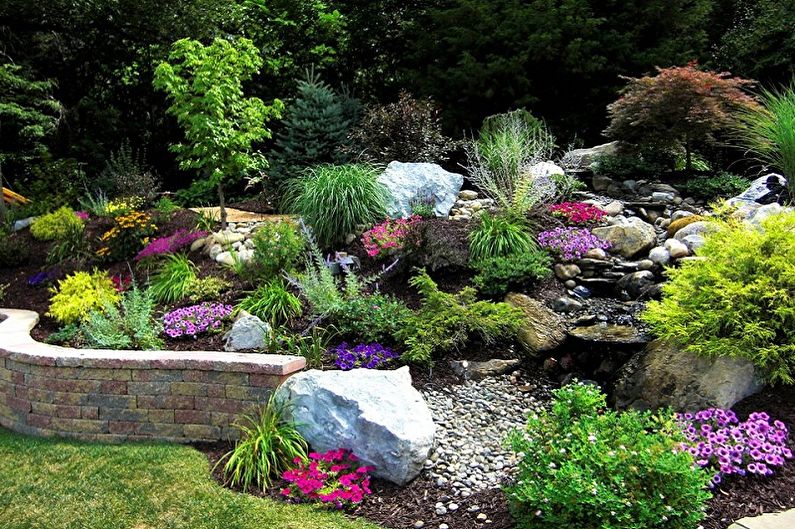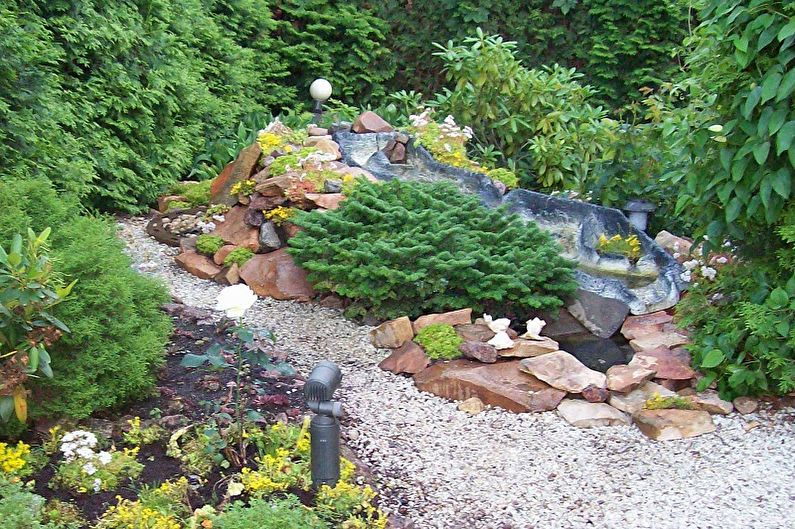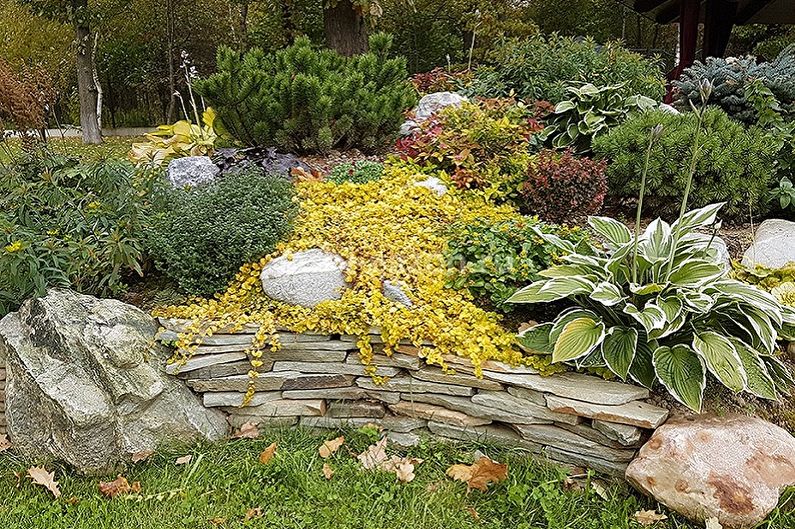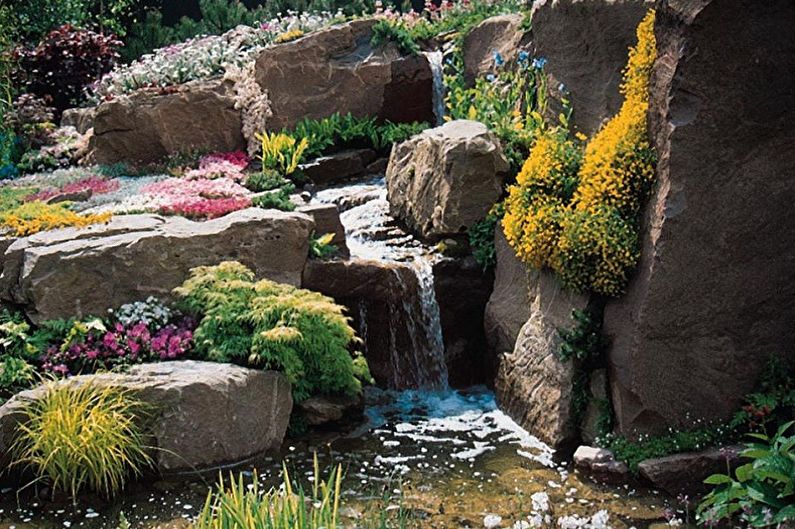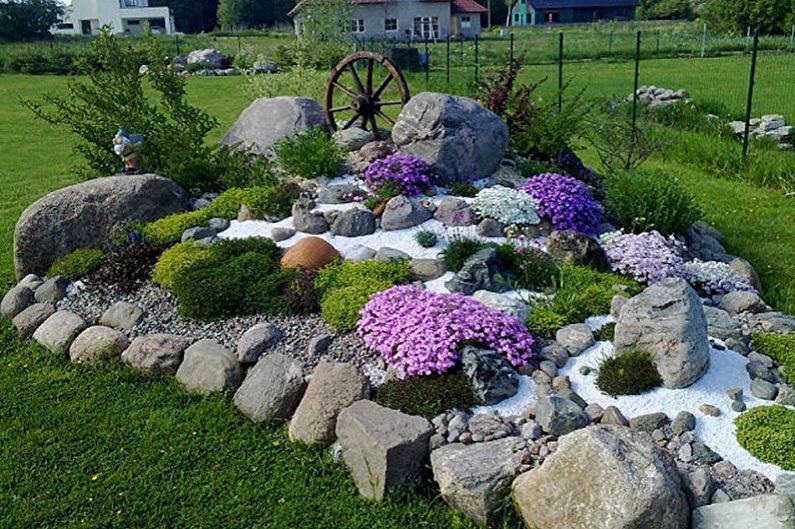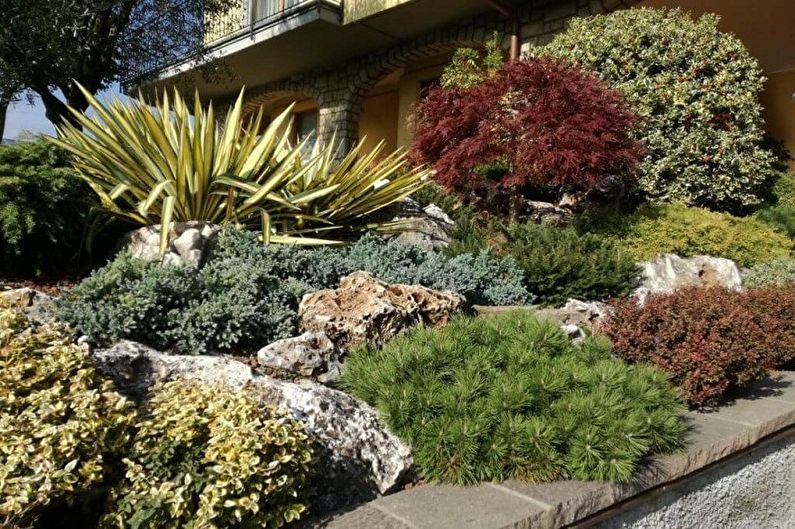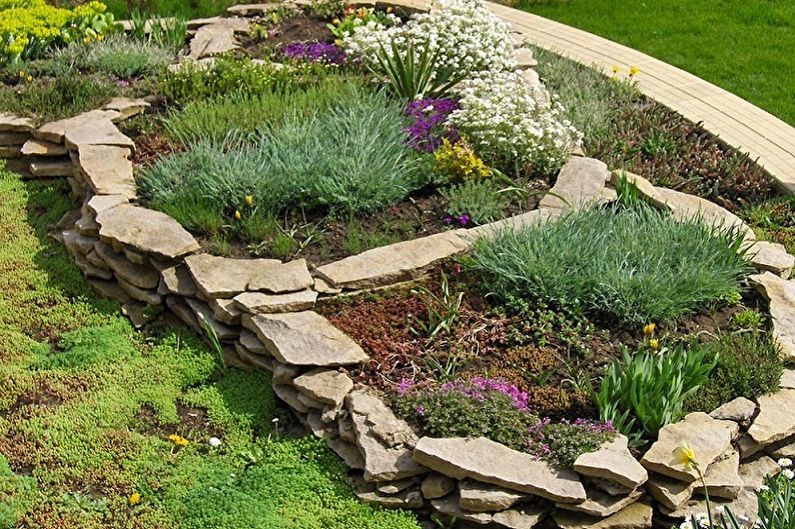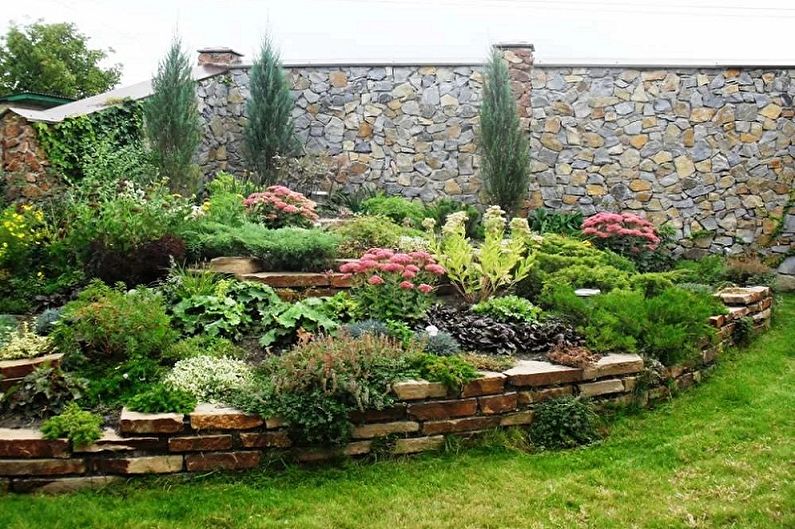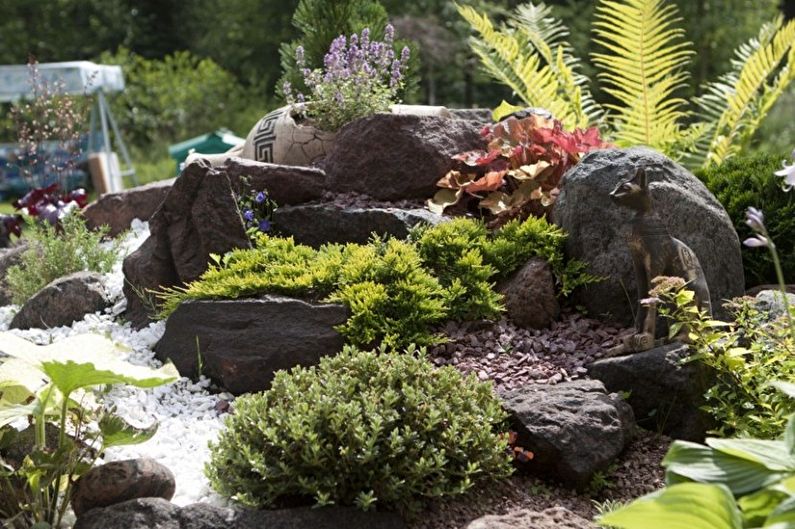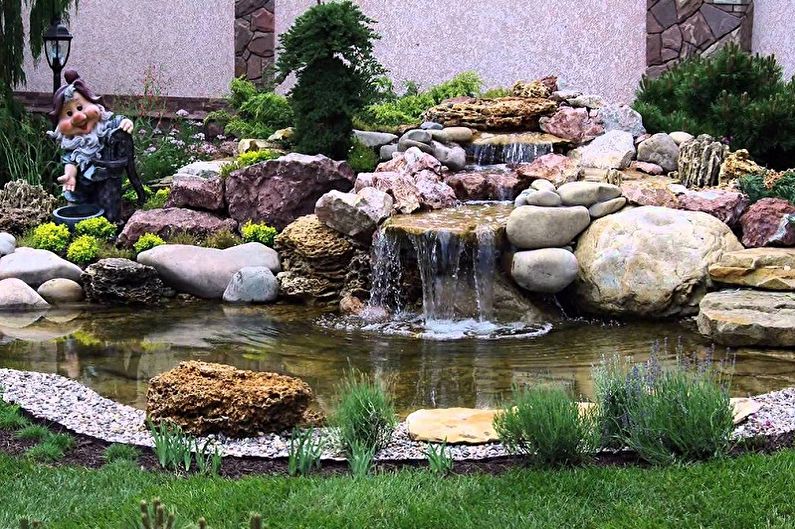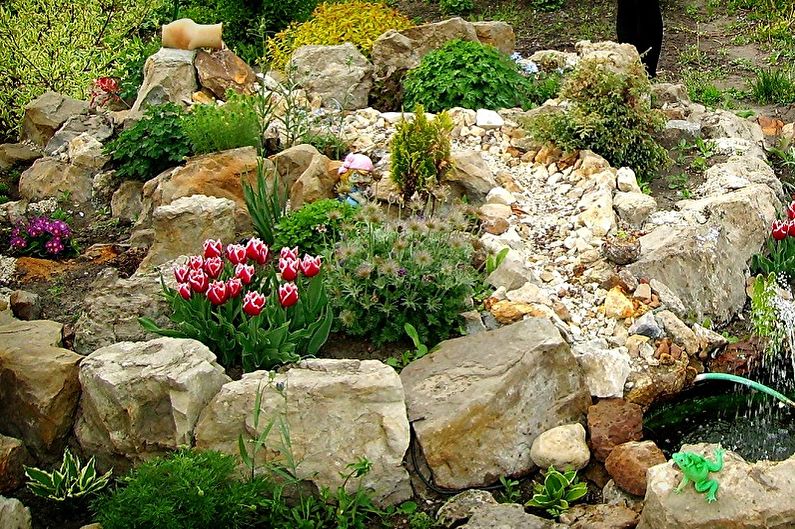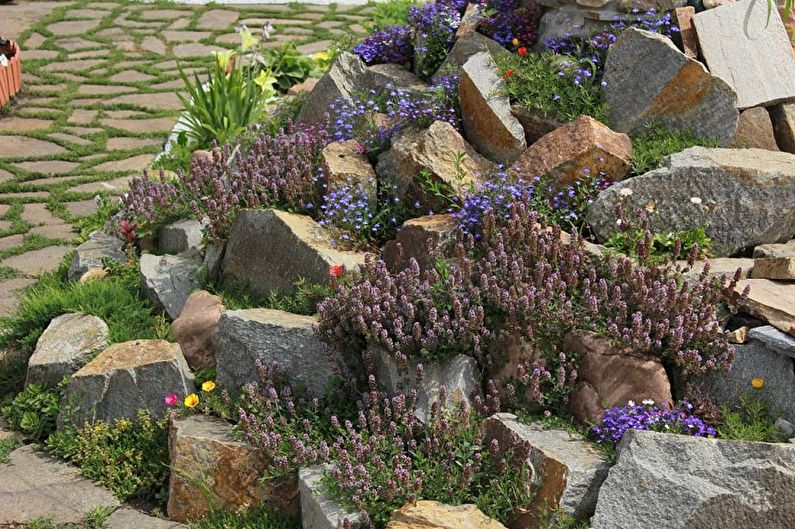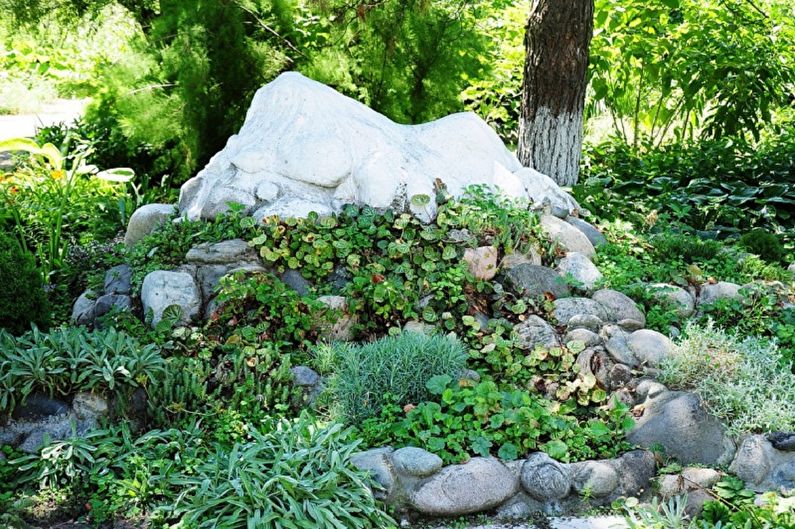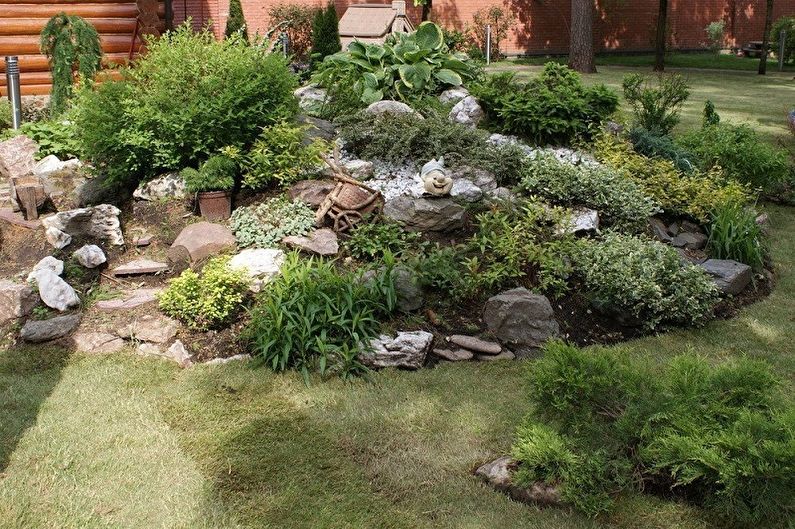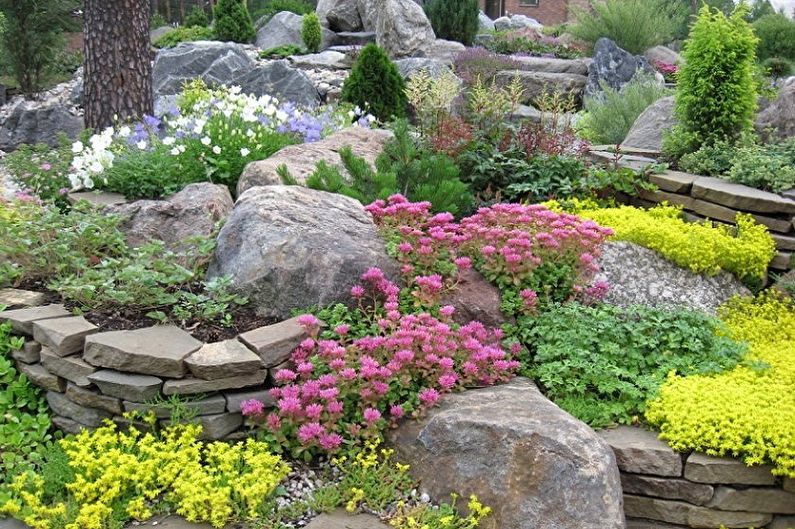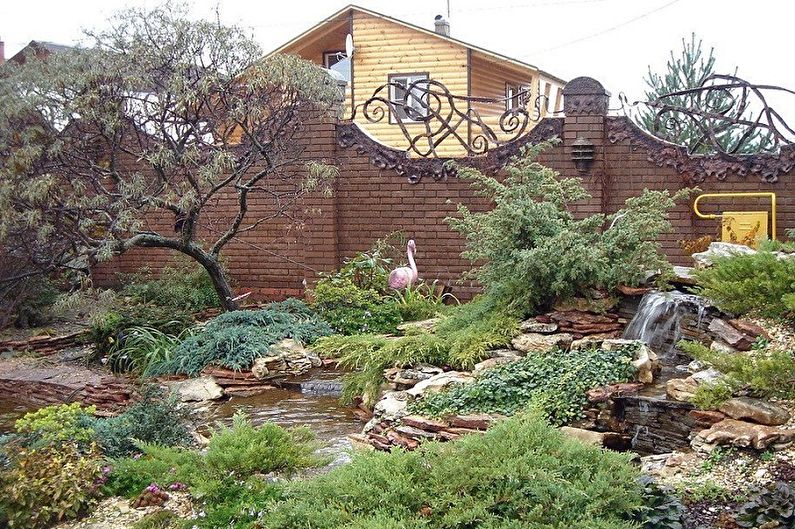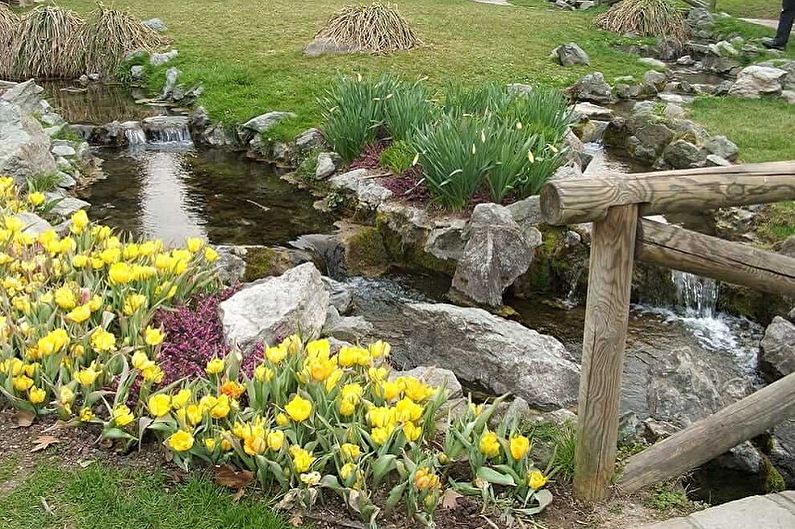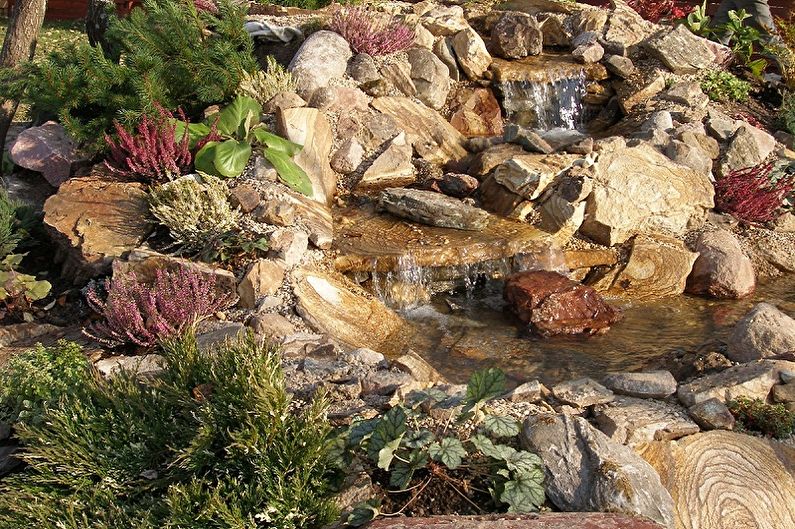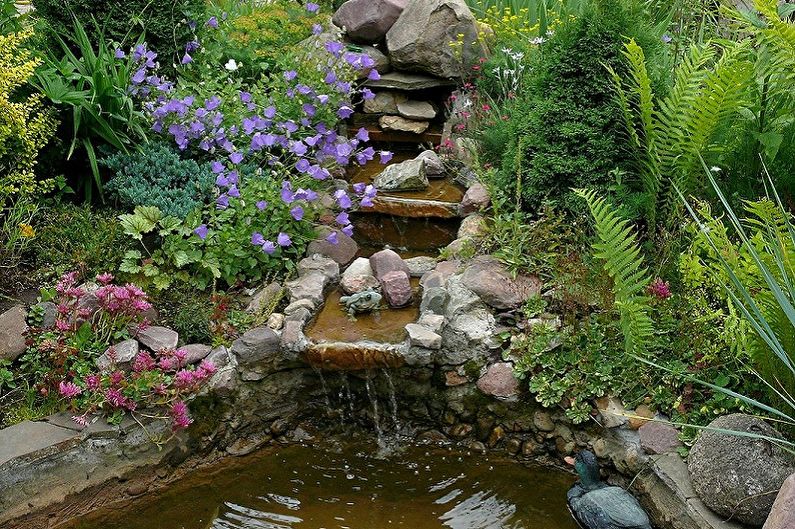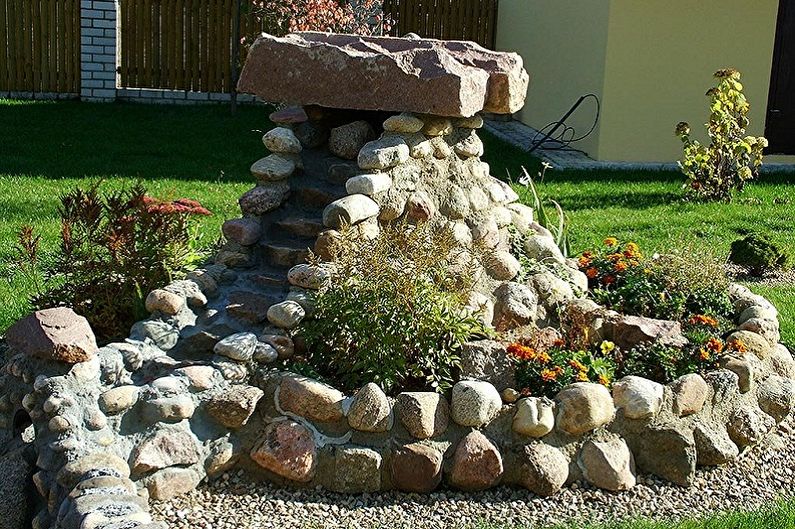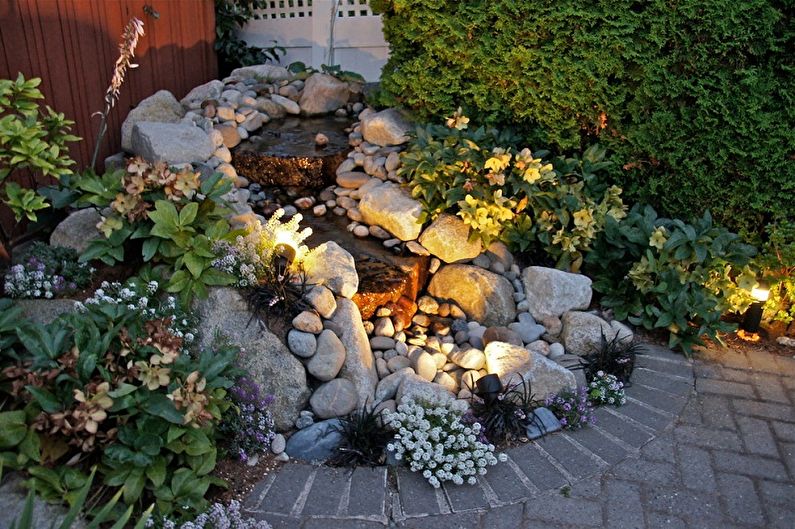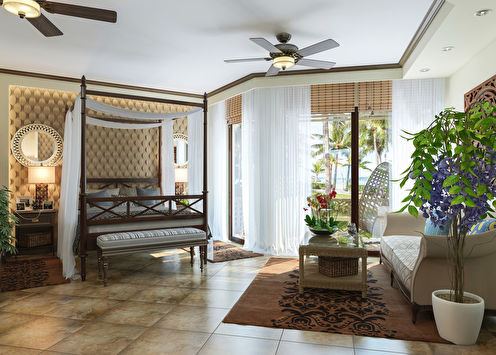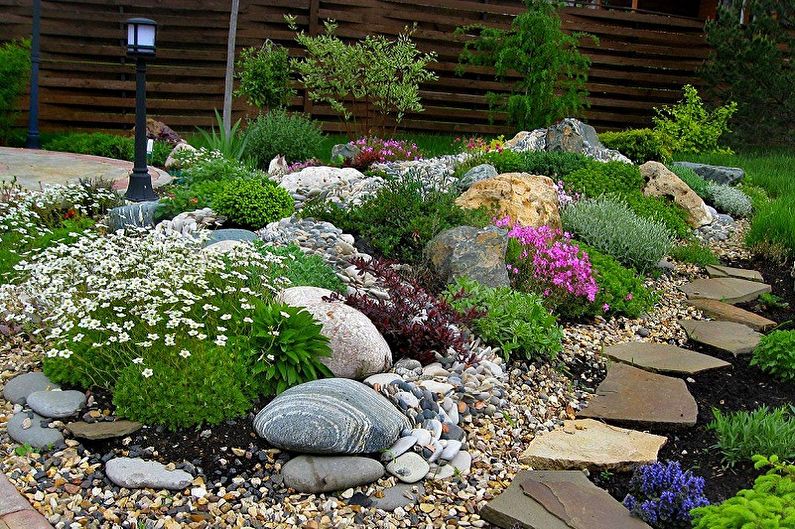
Alpine hills or, as they are also called, rock gardens are magnificent decorations of house sections, which in recent years are increasingly replacing standard flower beds and rabatki. They become a worthy decor for rich estates and modest summer cottages, complement the landscape designs of city parks. Properly choosing plants and stones, you can create a luxurious relaxation area that will delight the eye with its unique attractiveness. Next, we will consider what alpine hills are and how to make a rock garden with a pond on the site with your own hands.
Design features of alpine hills
Rock gardens are the reduced imitations of rocky natural landscapes therefore stones are the basis of any composition. For the arrangement, several main types of stones are used: wild stone, limestone, tuff, sandstone, granite, etc. Moreover, it is worthwhile to select material of different sizes that has natural irregularities and structures. The alpine hill should be asymmetrical, because in nature there are no ideal forms. The stones can be arranged in different ways, depending on the type of slide, sometimes they are strengthened with cement mortar to ensure immobility.
The main work on creating a specific relief, laying stones can be carried out at any time of the year, except winter, but it should be borne in mind that the composition will shrink for 3-4 months, and only then can plants be planted.
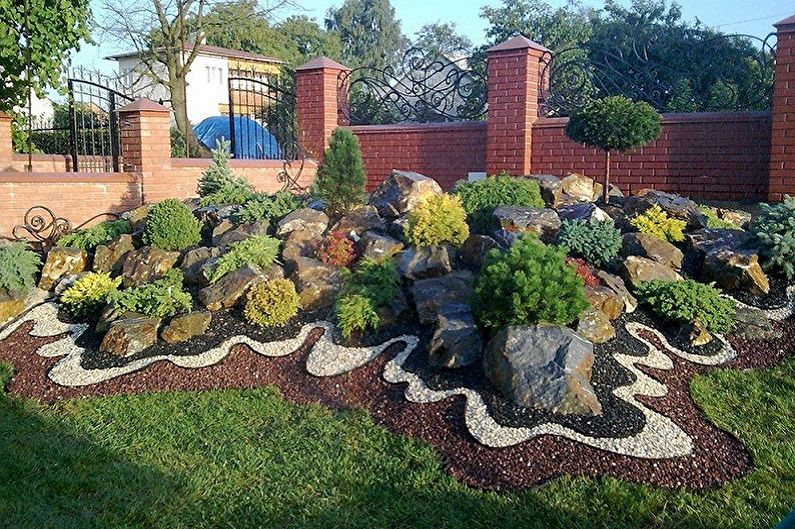
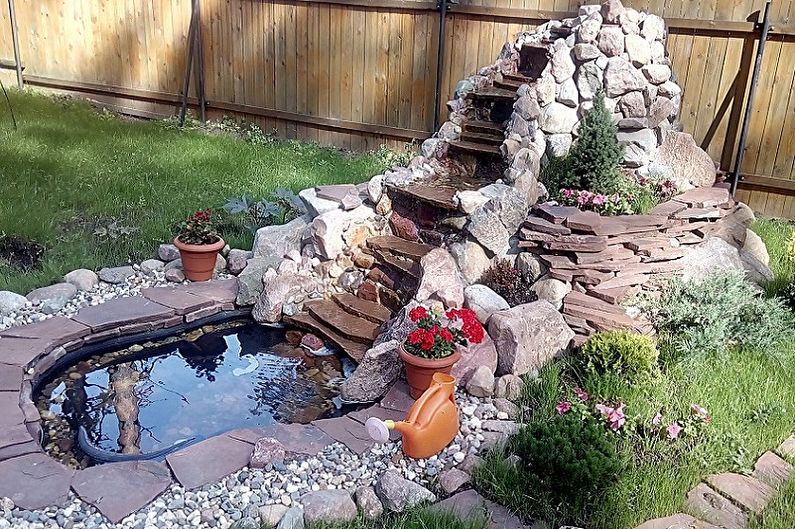
How to choose plants for an alpine hill
The choice of plants for rock gardens needs to be thought out in advance, since each type of landscape is suited to one or another set of representatives of the fauna world, for example, creeping species are inherent in creeping rock gardens, and flowering types are inherent in valleys. Experts advise to select representatives of the flora that bloom at different periods, so that the alpine hill can please the eye for a long time. Perennials, in most cases, bloom in the fall. This can be lavender, geranium, saxifrage, etc. Careful observation is required for their growth, since highly grown crops can block sunlight from lower plants. Bulbous (crocuses, hyacinths) bloom in spring, and in winter they will not allow conifers - thuja, some varieties of fir trees, etc. to empty the landscape.
On the alpine hills, undersized shrubs, such as Japanese maple, rosemary, azalea, dwarf roses, are also found. From grassy representatives, one can choose thyme, bluebells, marigolds, and edelweiss, phlox, and dwarf ferns are often planted on hills. Ground cover daisies, St. John's wort, yarrow will perfectly cover the empty spaces between the stones.
When planting, one of the important rules must be taken into account: low-growing species are planted in groups, and lush flowering species are isolated. Planting in the ground begins at the top of an alpine hill and gradually moves to its foot. To avoid water evaporation and block weed damage to plants, it is necessary to leave a small funnel around each specimen when planting, into which pebbles should be poured.
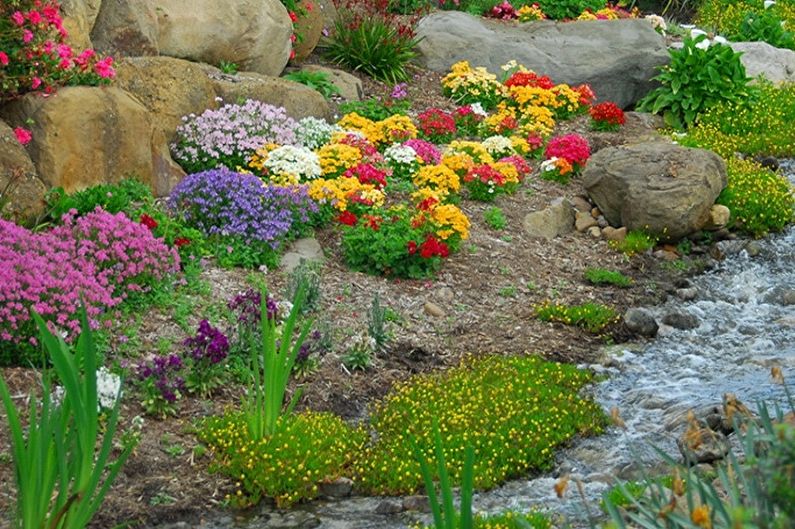
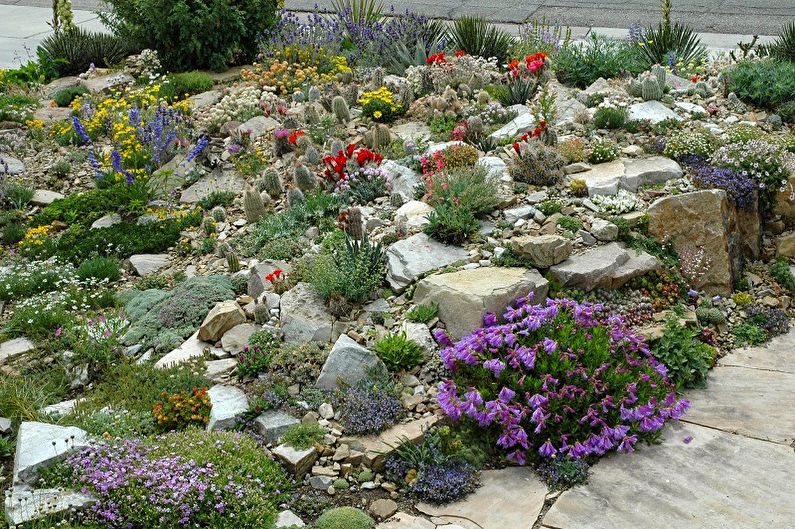
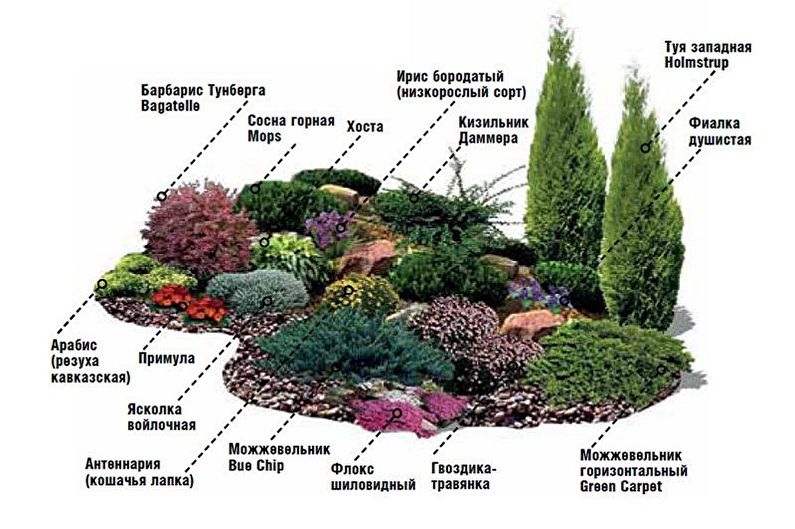
Types of rock gardens
Contrary to popular belief that the creation of a rock garden is not a cheap pleasure, since the services of a designer and expensive materials are needed, we note that it is not difficult to create such beauty yourself. The main thing is to decide which composition you would like to see on your site. There are such main varieties of rock gardens, such as:
1. Rocky cliff. Creating such a landscape will require a decent amount of dimensional bare stones, which are piled up in the form of elevation. Plants are present in a minimal amount - basically, they are located in niches between boulders.
2. The hillside. The composition is formed on a high elevation, so it is better to form it if such a relief is already present on the territory. If not, the slide is made in bulk on its own, and then stones of different sizes are laid and planted undersized and creeping representatives of the flora.
3. Mountain valley. Such a mini-landscape is built on the principle of laying out large stones in a chaotic manner. At the same time, clumps should only partially protrude above the surface of the soil, and flowering green crops are planted in between.
4. The gorge. This is a great option if there is a hollow on the surface of the soil. In this case, it remains only to form rocky slopes and to plant representatives of mountain vegetation.
5. Alpine meadow - A special kind of rock garden, when the stones are practically not used, and the elevation effect is created by planting plants of different heights. In general, it is a beautiful green meadow with meadow flowers.
6. The swamp. This option is suitable for fans of all the unusual. When creating a shallow hole is formed, the perimeter of which is laid with boulders. Marsh species of plants are planted here, and unusual unusual snags emphasize the general atmosphere.
7. Rock garden with a pond. An excellent composition, where there is a small pond at the foot of an alpine hill, and graceful mountain streams flow down the rocky slopes. The creation of such a rock garden is the most labor-intensive process, but the result will certainly justify the effort spent.
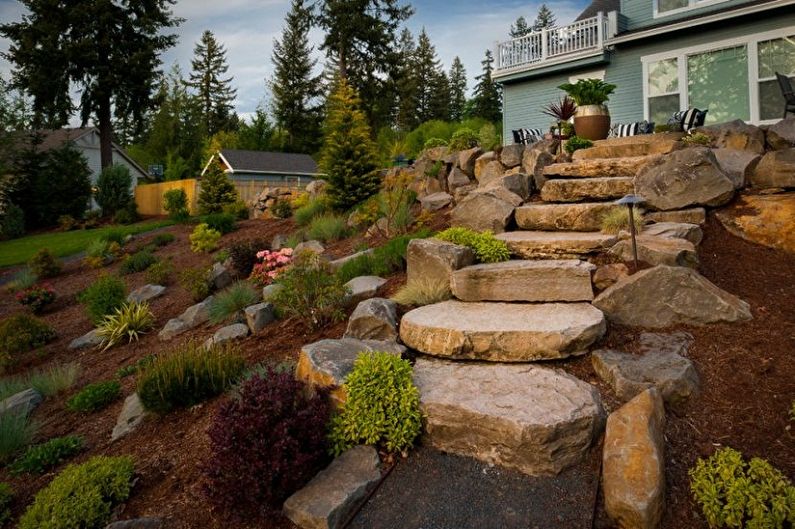
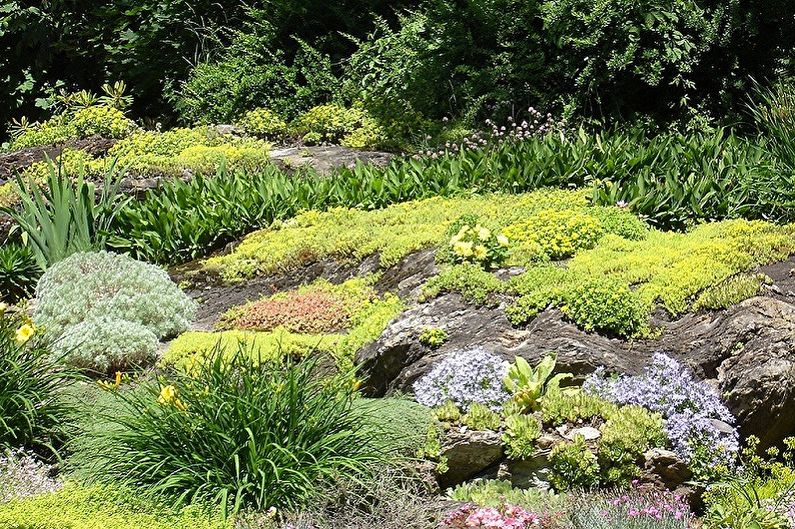
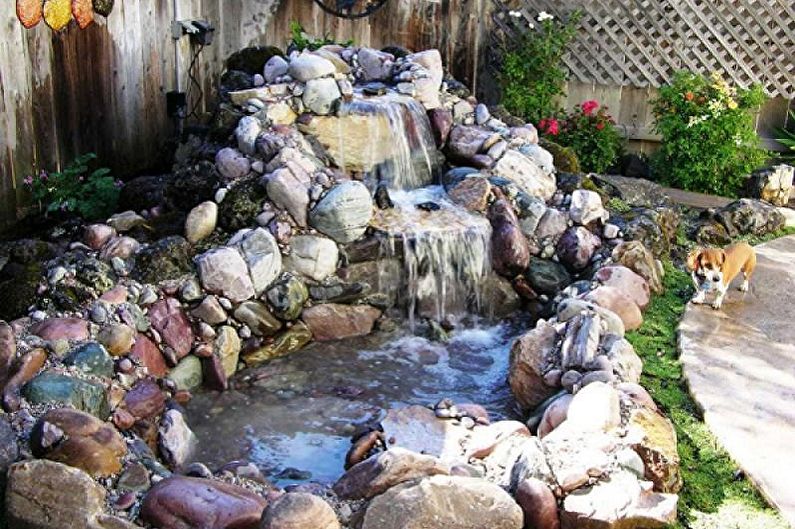
DIY Alpine slide with a waterfall and a pond
We will consider the most time-consuming option of creating a rock garden, on the example of which you can well independently build a mountain "waterfall" on your site or a simpler composition. First you need to choose a site. If the territory has its own reservoir, then the best option is to place the composition near it or on a small slope. You should not equip this type of alpine hill near tall trees, as falling leaves will constantly pollute the pond. Getting started, it is better to initially draw a sketch on paper, and only then embody the idea on the ground.
What needs to be prepared
Arrangement of this type of alpine hill will require the preparation of stones of various sizes, as well as a solution of cement to fix the structure (sometimes use foam). To build a water circulation system, you need a large tank for a reservoir, a pump and a hose for water supply. As a container, you can use a clogged old bathtub or an unnecessary large trough. It is better to pre-treat the walls of the bathtub with liquid cement - this way the pond will have a more natural look.
The pump must have the appropriate power, so the model is selected based on the height of the slide and the displacement of an artificial pond and the desired pressure of water running down the stones. Experts advise installing a special cleaning filter for such compositions, which will ensure its transparency for a long time.
Plants need to choose the most hygrophilous, for example, daylily, iris, sedge, water lily, etc. Sometimes they place pots with these plants directly in the water. The principle of planting plants on the slopes of a rock garden with a reservoir is shown in the photo.
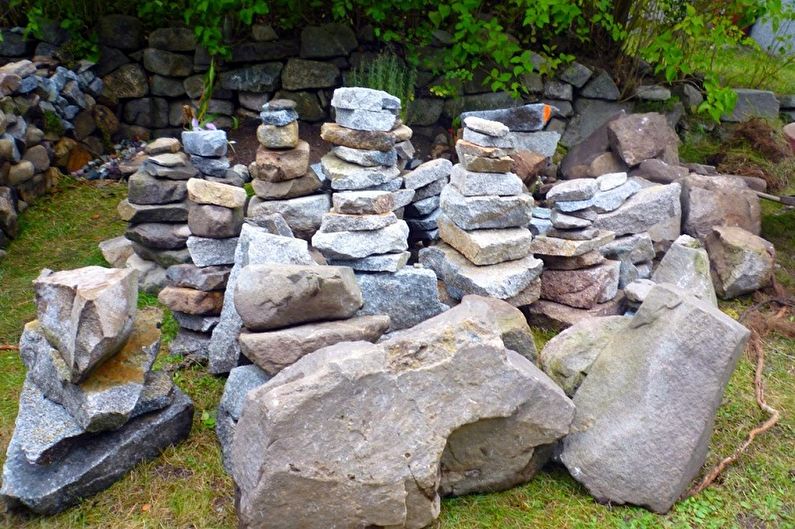
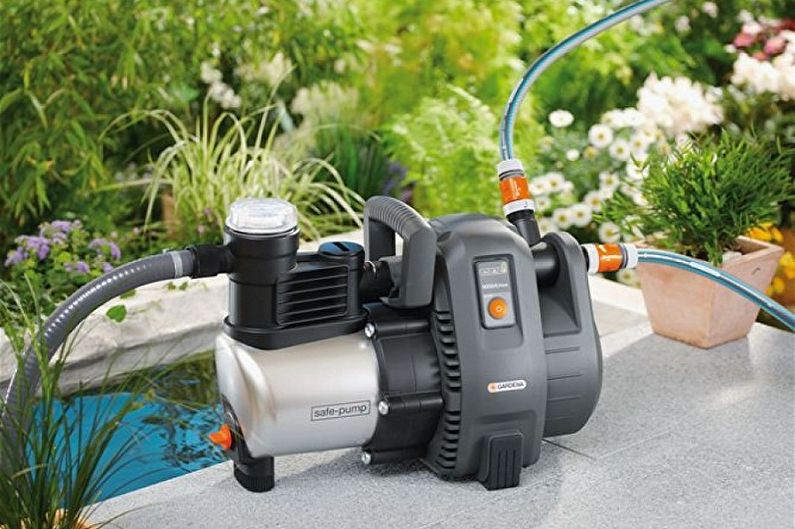
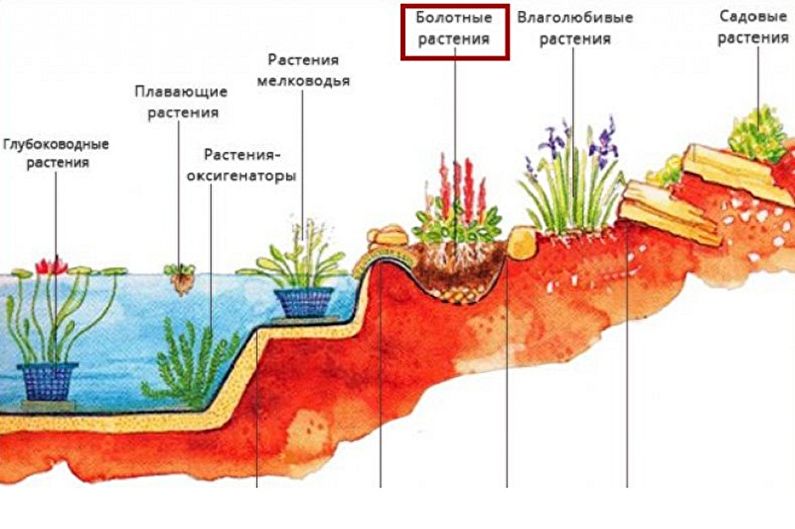
Site formation
It is easier to lay out an alpine hill on sandy soil, since clay soil will require additional drainage. More often they prefer the southern sides, where the recreation areas are located and where the most suitable lighting is. First you need to dig a pit for an artificial pond, and from the land obtained, you can simultaneously form an elevation.It is very important to give the banks a stepped shape with a central depression along which our cascading waterfall will flow.
If the estimated height of the slide is more than one meter, it is advisable to strengthen it. To do this, it is necessary to initially form the foundation: a hole is dug up to a depth of not more than 20 cm, the perimeter of which should exceed the size of the future hill by half a meter. A layer of crushed stone is laid at the bottom of the recess, a lattice of reinforcement and concrete mixture is poured. In this state, it is necessary to leave the foundation for a couple of weeks, and then form a slide.
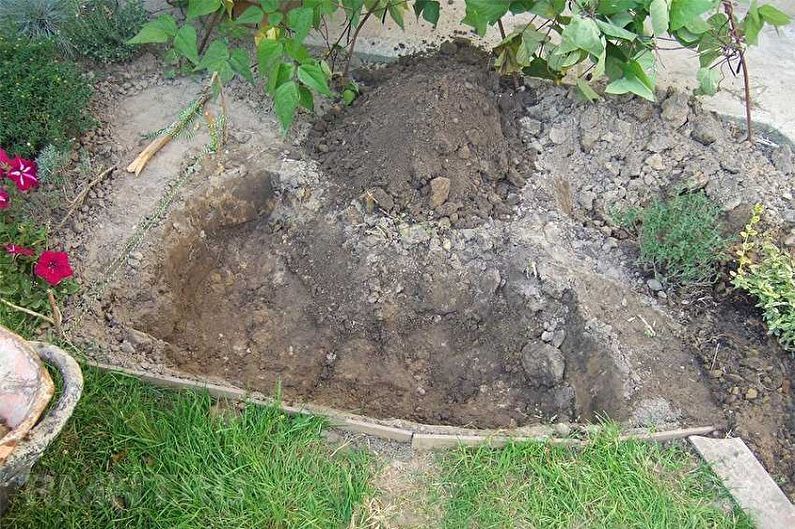
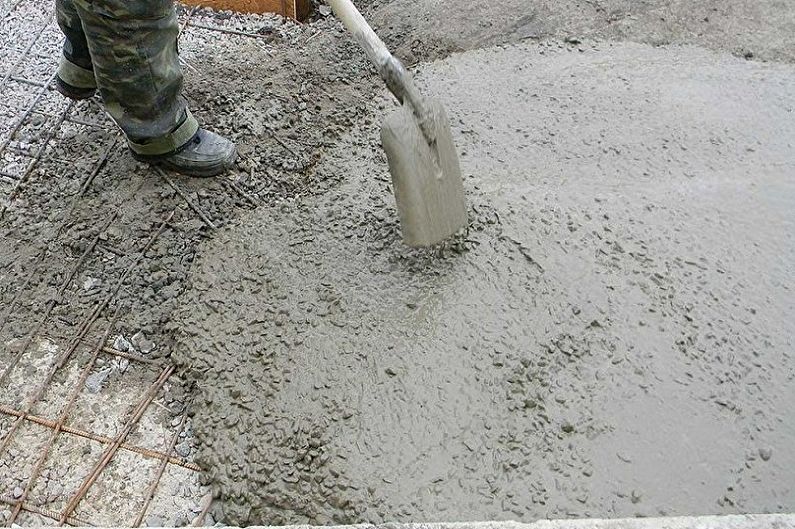
Making an artificial waterfall with a pond
When the main relief is formed, proceed to the arrangement of the slide. First you need to form a dense stone layer on the slopes, during the installation process a water supply hose is laid and masked. The upper edge of the hose goes up to the place where the source will be, and the lower - is immersed in a pond. When stone-laying on an inclined surface of the shores, liquid cement is used, which provides excellent relief durability. Large stones are used for decoration, ledges - steps on which water will flow down - are better formed using flat boulders.
Water is poured into the installed tank with an artificial pond and the pump is placed by connecting the edge of the hose. In this option, it is also necessary to consider carefully masking the power cable, which will be stretched from the pump to the energy source. At this stage, the construction of the alpine hill can be considered completed. The following is the process of planting representatives of the flora. Plants need to choose the most hygrophilous, as mentioned above. An alpine hill with plants and a waterfall and a pond entwined with plants will be a worthy decoration of any suburban area.
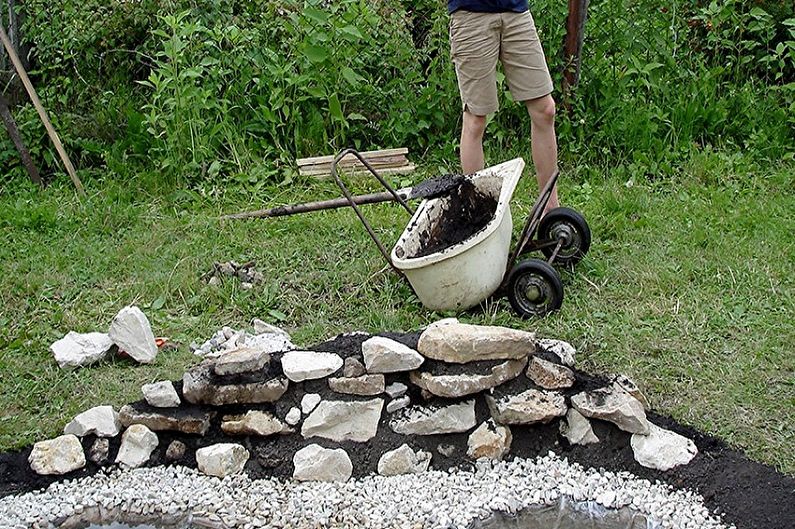
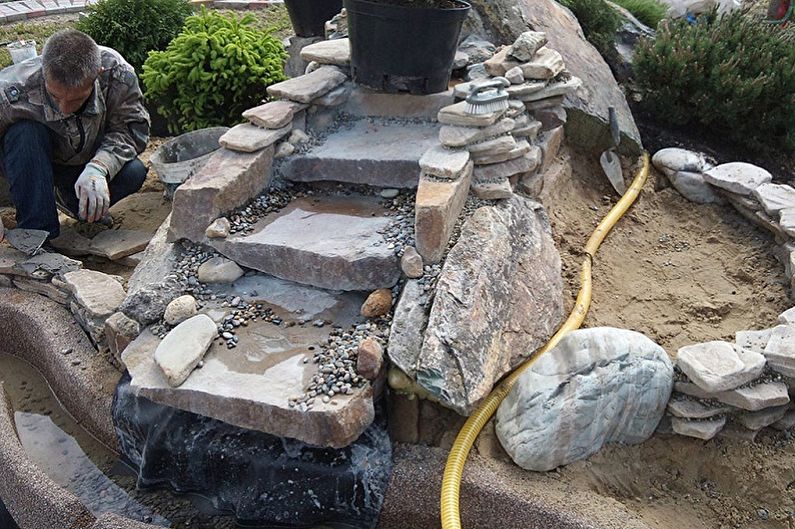
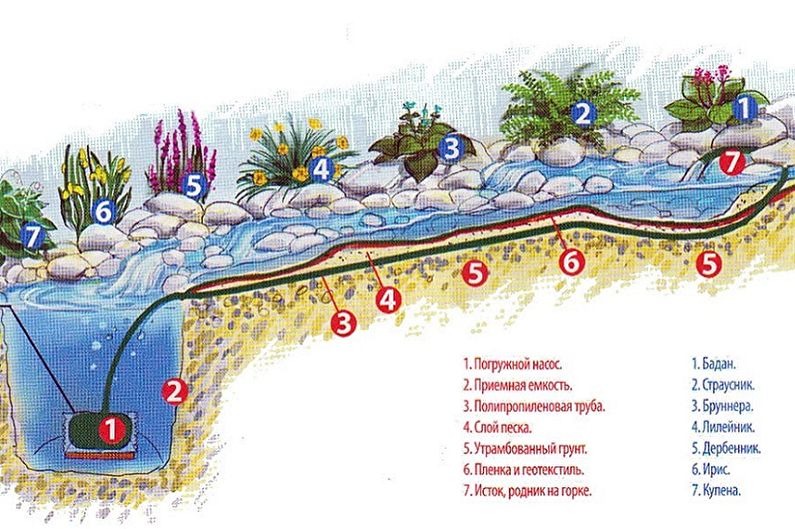
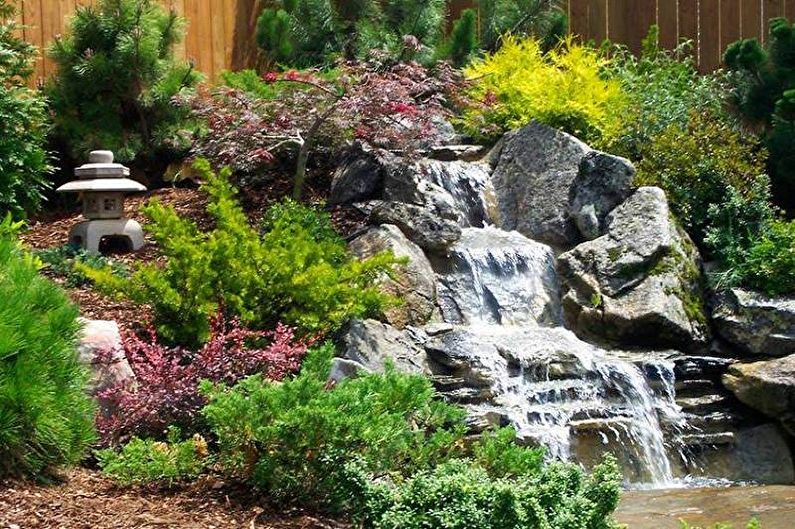
DIY Alpine slides - photo ideas
You can learn more about the creation of alpine hills and their features by visiting the photo gallery. Here are vivid examples of the exquisite neighborhood of stones and plants, among which you can get ideas for creating your own alpine slide on the site. Enjoy watching!
